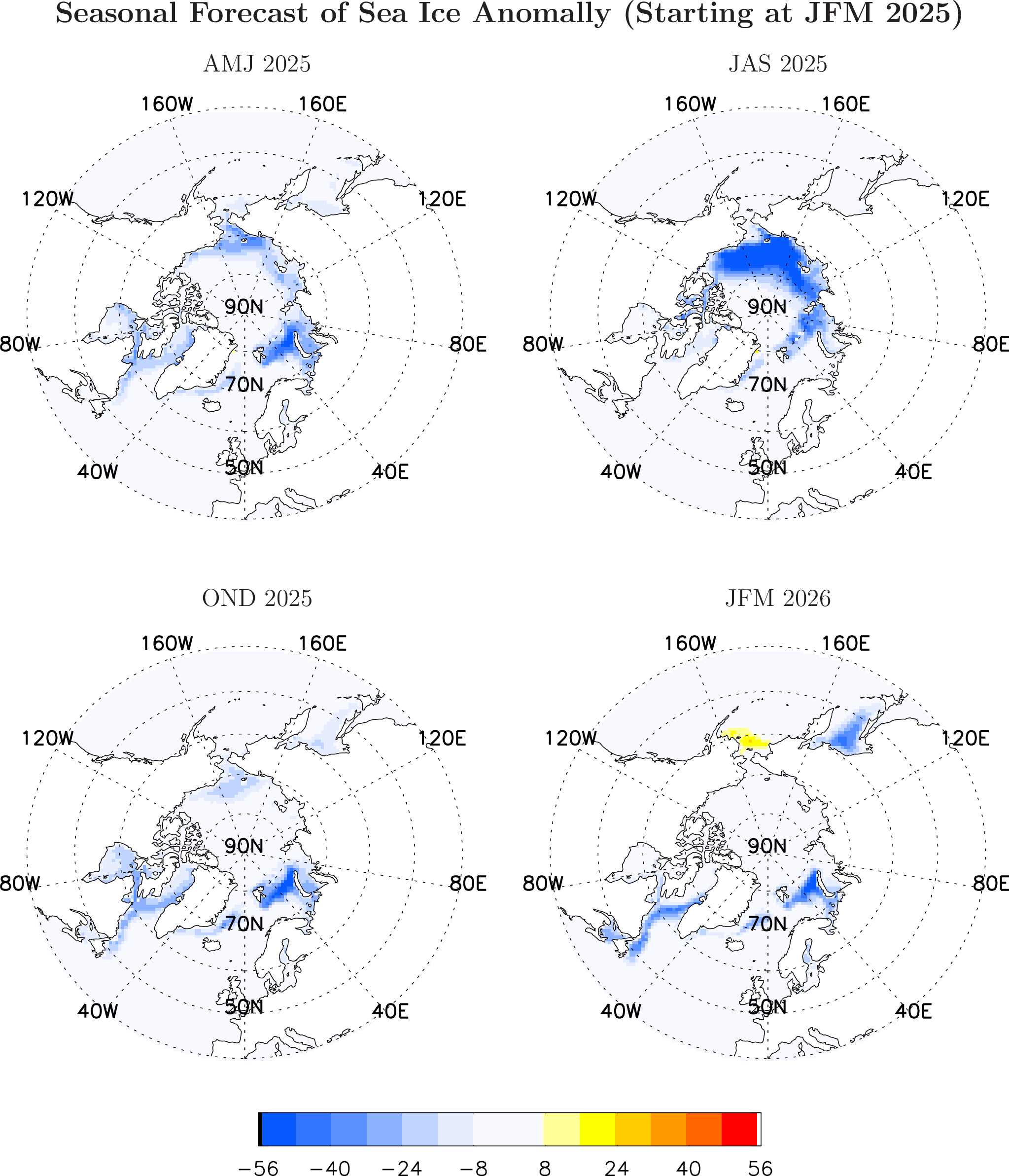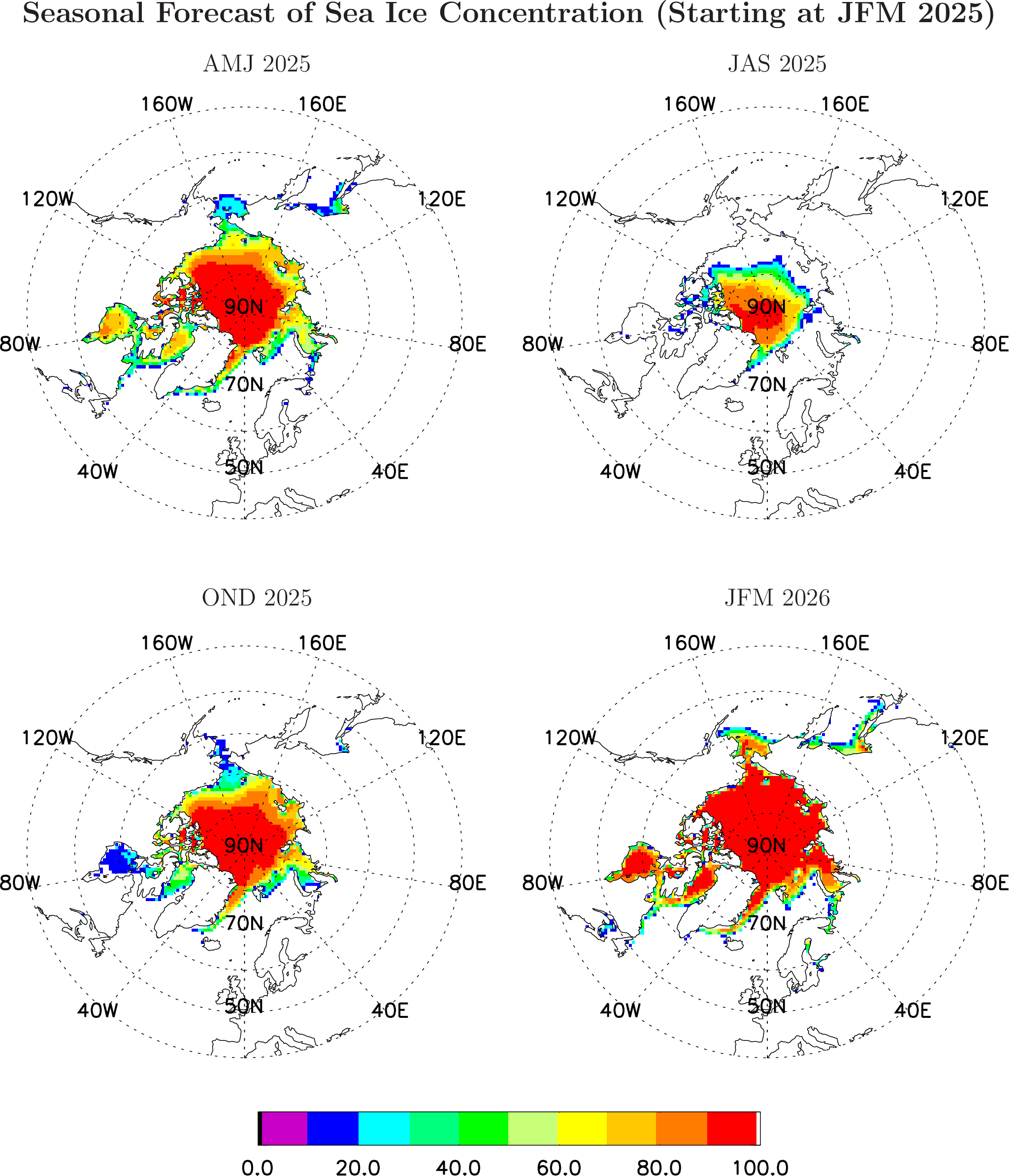

Click on the figures to view the latest Arctic sea ice prediciton from our Pan Arctic Markov model.


The fast summer Artic sea ice retreat not only has been an icon of climate change, but also created more commercial opportunities in the newly opened Arctic waters, such as shipping and oil drilling. However, lower summer sea ice cover comes with larger ice variability, positing tremendous difficulties for planning and even threats for operations of commercial activities in the Arctic. More importantly, the recent rapid decline of Arctic sea-ice extent and the projected continued decline in the future raise an important question as to the possible impacts of sea ice losses on the Northern Hemisphere weather and climate. Therefore, understanding the Arctic sea ice predictability and develping skillful sea ice forecast models become increasingly important to the advance of weather and climate services, especially when the Arctic enters into a new climate state.
A linear Markov model has been developed to predict the ice concentration in the pan Arctic region at the seasonal time scale, which represents an original effort of forecasting Arctic sea ice year around with a reduced-dimension statistical model. The model was built to capture co-variabilities in the atmosphere-ocean-sea ice system defined by sea ice concentration, sea surface and air temperature, geopotential height and winds at the 300mb level. Multivariate empirical orthogonal functions of these variables served as building blocks of the model. A series of model experiments were carried out to determine the dimensions of the model. The predictive skill of the model was evaluated in a cross-validated fashion. The model shows considerable skills (Figure 1) within the Arctic Basin during summer and fall. Particularly, in the region north of the Chukchi Sea, Beaufort Sea, Eastern Siberian Sea, Kara Sea, and Barents Sea, correlation skills are above 0.6 even at a 9-month lead. Because the Arctic Basin is completely frozen in winter and spring the predictability appears in the seasonal ice zone during these seasons. The model has higher skills in the Atlantic sector of the Arctic than in the Pacific sector. September sea ice extent (SIE) is then calculated from predicted asea ice concentration. The model predicts well the phases of September SIE variability but underestimates the accelerated decline in SIE, resulting in a systematic model bias (Figure 2) . This model bias can be corrected by a constant bias correction or linear regression bias correction, leading to an improved correlation skill of 0.93 for the 2-month lead SIE prediciton (Figure 3) . An example of foreward predictions of sea ice concentration is provided here.